




Langara Falcons home openers give the women's team a strong beginning to the season. P8


A Vancouver Food Bank faces backlash for its guideline on international students. P2
Langara's library abolishes late fees on borrowed items. langaravoice.ca


A fire alarm went off and fightfighters were called, forcing students to leave their classrooms on Oct.30. Fighfighters walked between buildings to look for the alarm and they found out it was a drill. According to Rob Chorney, a fire captain of squad 22, the alarm was a matter of miscommunication between the security and engineering departments. Once the situation was clear, the miscommunication was resolved. He said all the protocols were correctly followed by both security and students.
The Langara Students’ Union shares less financial information publicly compared to other postsecondary student unions, a survey of their websites shows.
The student unions at Simon Fraser University, University of British Columbia, British Columbia Institute of Technology, Kwantlen Polytechnic University and Douglas College publish their financial statements on their websites.
The LSU does not publish financial statements on its website. The Societies Act – the legislation governing B.C. student unions – does not require such disclosures.
“Comparing all the different websites of all the different ones and the level of transparency, and it’s like night and day,” said Stanley Tromp, a journalist and Langara alumni who specializes in freedom of information policy. “They want to be as secret as possible.”
He said other student societ -
ies put everything online. “All the minutes and financials and agendas and notices. It’s all public and wide open,” Tromp said.
Spencer Dane, an instructor at Langara’s school of management, said he is concerned that students need to fill in a request through a form on website to access LSU financial statements.
“The money that is raised within the student union comes from students. So, why would you not want to be transparent, so that students know what happens with the money they’ve contributed?” Dane said.
Simon Fraser Student Society president Emmanuel Adegboyega said that if his student union made its financial records private, the response would be “very bad.”
“You would lose the trust of the student body,” Adegboyega said.
He said his student union’s policy prevents this behaviour and said there are internal checks and balances to ensure accountability and transparency.
In email to the Voice, the LSU said
it “engages in discussions with other student unions regarding best practices in financial management.”
It said it participates “in informal discussions and collaborations with neighbouring student unions
"Why would you not want to be transparent ... what happens with the money they've [students] contributed?”
— SPENCER DANE, LANGARA INSTRUCTOR
to exchange insights on budgeting processes, auditing practices and transparency initiatives.”
In 2020, $111,478 was paid to the six full-time staff members. By 2024, that figure reached $224,188. From 2023 to 2024, LSU staff sala-
ries increased from $673,753 to $694,414; VP external increased from $8,476 to $17,540 and VP internal rose from $21,884 to $43,912.
Comparisons with other student unions also show that the LSU holds fewer events than its counterparts.
In its most recent audited financial statements, the LSU reported spending $130,418 on “campus life and events.”
Over that period, the LSU has six events listed on its calendar. If the total campus life and events budget was allocated equally to these six events, each would have cost the LSU an average of $21,736.
At the time of publication, the LSU has three upcoming events listed on its events calendar for fall 2024, with a recently completed Halloween party on Oct. 31.
The party included pizza, candies and pumpkins for students to carve.
Event organizers also encouraged students to participate in dancebased games.
BCIT’s Student Association held an event on Oct. 30 that included
arcade games, exotic animals, cookie decorating and a group video game competition.
BCIT staff reported hosting more than two dozen events so far this semester.
SFU’s society has 123 student union-led events listed on its calendar for the fall 2024 semester.
Langara student Lei Kazemi, who was part of an LSU election protest on Oct. 15, said she has a history of frustration with LSU’s practices. “I’ve seen very little action on their part and I find that every time they do attempt to do something it’s very performative,” she said.
Vancouver lawyer David Kandestin, whose practice includes advising non-profits societies, said that, when comparing student unions, “it’s rarely apples to apples” but that “the overall goal is to be transparent and accountable.”
“I would encourage student union leaders to meet with their equivalents at other institutions to learn more about what works and what doesn’t when it comes to accountability,” he said.
By TUAN TRAN
Arezoning proposal for the Langara Family YMCA highlights the Langara area’s lack of affordable student housing when compared to other Metro Vancouver institutions.
The YMCA recently changed its development proposal to include three mixed-use developments at heights of eight, 33 and 37 storeys. It contains no specific proposals for student-focused housing.
communications analyst at SFU, they offer different housing options for undergraduates, graduates and families.
“For students living on campus, commuting is a short, 5-to-10-minute walk to classrooms and lecture halls, gym, library, restaurants and food options,” said Hodson in an email statement.
Jas Nguyen, a real estate agent in Vancouver, said in seven years of working in real estate, he’s seen few mentions of student housing in the South Vancouver area even though “it’s a very good market right now, especially when the government is accepting immigrants.”

According to Langara’s 2023 transportation survey, only 41 per cent of Langara students live in Vancouver while the remaining 59 per cent commute from less expensive areas outside the city. Langara students say that affordable local housing would be a boon for their academic experience.
As Nguyen explained, one reason could be that the cost of living in Vancouver deters students from renting nearby.
“You’re spending three hours every single day to get to school,” said Anderson Tseng, a second-year computer science student. “Imagine the amount of time you would have if you could live on campus, or live nearer to campus.”
Udaypartap Singh, an international student at Langara said “I would say it’s a good idea to have housing near the college."
“But I still have a doubt about the rent,” Singh said, referencing housing in the Marine Drive area. “That is also for students… you must have seen, they charge like $2,500 for like, one or two bedrooms.”
Student housing in the Langara area falls behind the on-campus housing provided by other institutions in Vancouver such as Simon Fraser University, which houses 2,360 students on campus with roughly 950 more on the waitlist.
According to Jeff Hodson, a
$2,367
The average rent for a one bedroom unit in Vancouver, making it the most expensive city in Canada.
“When people come here, it’s not easy,” said Nguyen. “Some people, students and workers, struggle to live because everything is expensive.”
Khushi Salwan, a second-year international student at Langara, said even though it is difficult for her to study at home because there are roommates causing noise, studying in the library is not viable.
“If I want to like… come to the library to just study for a day, I would have to take a transit. That’s like 45, 50 minutes,” she said.
Thomas Davidoff, an associate professor at the Sauder School of Business at the University of British Columbia, said on-campus student housing is a good idea as long as students are willing to cram into small spaces.
“There will be plenty of demand, so [it] should pay for itself,” said Davidoff. “This should improve the undergrad experience and reduce driving.”
14,300 Vancouver is facing a shortage of over 14,300 beds for students
1.8% The vacancy rate for one-bedroom units in downtown Vancouver 144% The cost of living in Vancouver is 44% higher than the national average
By KORALEE NICKARZ
The Greater Vancouver Food Bank will uphold their guideline limiting international students from accessing aid during their first year of study despite harsh responses from critics.
According to CEO David Long, the Vancouver food bank’s guideline was created in response to a “massive influx of international students” as well as social media posts and videos suggesting that food banks were a source of free food.
Describing the guideline as not a “hard fast policy,” Long said that there is some flexibility to ensure they help students facing food insecurity.
“Our mandate is for people in need,” said Long, “If you’re coming to Canada as an international student, it’s great. If you have money in the bank, you don’t really fit our criteria.”
bank.
Graham Riches, a former University of British Columbia professor and author of the book “Food Bank Nations: Poverty, Corporate Charity and the Right to Food,” said he disagrees with the Vancouver food bank policy.
“International students are human beings and there’s a moral imperative to feed hungry people and if a charity denies that it is in violation of… its own code of conduct, its own code of ethics,” he said.
According to Statistics Canada,

The federal government requires international students to have $20,635 in available funds to study in Canada, which amounts to $1,719.58 per month over the course of one year.
“When they come to Vancouver in particular, I know that doesn’t work,” said Long, adding that, in spite of the policy, no international student who needs real help will be or has been turned away by the Vancouver food
That's just the bottom line.”
Daniel Mikolela Agosta, a Kenyan international student in the Langara health sciences program said that requiring international students to wait until they have no money in the bank to access assistance is dangerous.
Agosta added that denying international students access to the food bank for their first year is unreasonable, because it is a very long time.
“I don't see any international students highly exploiting it,” Agosta said.
“Everyone should have access to food if they're
the bottom line”
roughly 25 per cent of post-secondary students in Canada are at risk of food insecurity.
Dan Huang-Taylor, executive director of Food Banks BC, said that the proportion of B.C. post-secondary students visiting food banks more than doubled from 2019 to 2023.
Ian Marcuse, a community food organizer and coordinator for Vancouver Neighbourhood Food Networks, said: “Everyone should have access to food if they're in need.
Rowan Burdge, provincial director of the BC Poverty Reduction Coalition said the framing of international students as taking advantage of support is “extremely xenophobic and hypocritical.”
The most recent Food Banks Canada HungerCount, an annual report documenting national food bank use, also identifies racialized people as “more likely to report food insecurity.”
A 2023 report published by the BC Federation of Students identifies a harmful stereotype that international students come from wealthy families and thus have endless financial means.
The report called the stereotype
“nothing more than a thinly veiled justification – with racist undertones – of the systematic and institutional maltreatment international students face.”
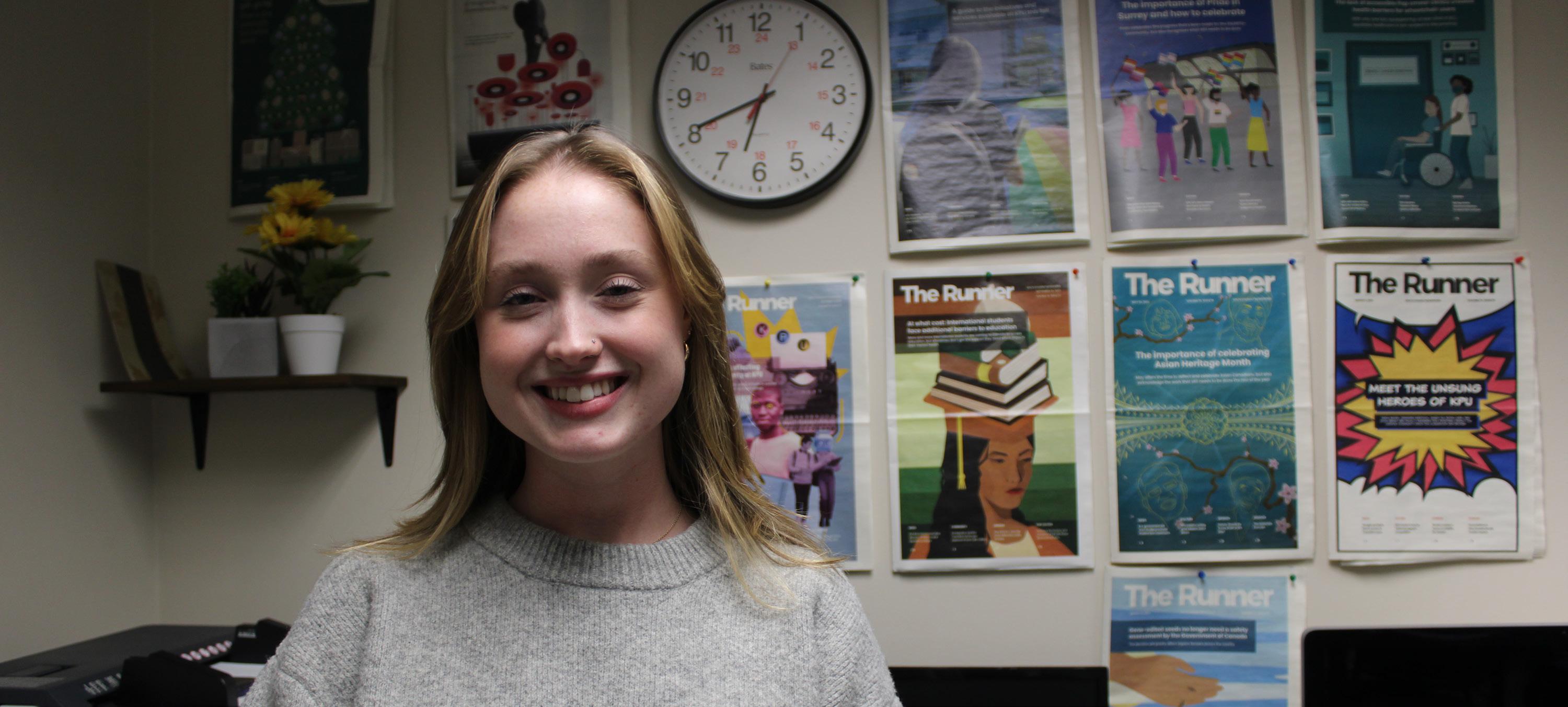
The provincial legislation that rules student unions is confusing, ineffective and unenforceable, says a longtime freedom of information journalist and Langara graduate.
“The law is broken,” said Stanley Tromp.
Tromp said students should ask for reform of the Societies Act that governs B.C. student unions.
The Societies Act is the provincial legislation that regulates B.C. nonprofits, societies and student unions.
All bylaws created by student unions must be in accordance with this act.
Tromp said students should bypass the recently re-elected NDP provincial government, which he called friendly to student unions, and approach the B.C. ombudsman and the B.C. auditor general.
“These are independent officers of
the legislature, such as the information privacy commissioner and they do not report to the NDP government,” said Tromp.
Tromp, a longtime critic of the LSU, also noted the ongoing controversy with the student union at Kwantlen Polytechnic University, where the student union attempted to close down the student paper.
Claudia Culley, a Kwantlen Polytechnic University student and editor-in-chief of the student-run newspaper, The Runner, said the paper and the Kwantlen Student Association have a “rocky relationship.”
Coverage by The Runner of the student union has included the alleged mismanagement of $2 million, the attempt to repeal and replace all bylaws and the use of $20,000 for a two-day retreat.
Things came to a head in September when a Kwantlen student organized a petition to pressure The
Runner to delete all references to the Kwantlen Student Association, both past and present, in its news coverage.
Sophie Hansen, a former Kwantlen journalism student, said stronger laws and oversight for student unions are necessary.
“When you’re viewing something like journalism as a threat, it makes you question what’s happening behind closed doors,” Hansen said.
“I want to know how they are handling their money and what the school is doing about it,” she said.
Tromp said because of the ineffectiveness of the Societies Act, Langara students have struggled for decades with the LSU for what he called undemocratic elections, lack of transparency and ignoring student concerns.
In previous years, Voice reporters have been stymied in attempts to get information from the LSU, such as financial documents and meeting
minutes. Copying documents has been restricted and continues to be limited.
While the Societies Act says student unions must provide copies of any records that members are entitled to, LSU bylaws say that they cannot be reproduced “without the express written consent of the president or vice president finance & administration.”
The LSU said in an email it prioritizes “transparency and compliance with the Societies Act … This is simply an internal step to verify records and facilitate accurate communication rather than limit accessibility.”
Bryan Breguet, Langara economics instructor and former candidate in the provincial election, agreed with students during a recent allcandidates forum about their complaints of LSU undemocratic practices. He called the Societies Act broken.
“They’re 100 per cent right. The LSU is completely broken,” he said. He called the recent LSU election “a scam process.”
“We need reform,” Breguet said.
1. Established
The Act was first introduced on March 25, 2015.
2. Total number
B.C. has approximately 27,000 societies.
3. Definition
Societies are non-profit corporations organized for social purposes.
SOURCE: WWW.COURTHOUSELIBRARY.CA
Langara Faulty Association pleads to college for permanent positions
One-third of Langara instructors work term-byterm, facing uncertainty each semester about whether their employment will be renewed, according to the Langara Faculty Association.
From Oct. 21 to 25, the LFA held its annual campus wide campaign, called Fair Employment Week, to spotlight the issues facing temporary instructors by emphasizing their limited job security and benefits compared to permanent staff.
Niall Christie, an LFA board member and department chair of history, Latin and political science, said the campaign is part of a national initiative.
He said faculty associations across the country “try to draw attention to the plight of temporary faculty and to try and encourage administrations to improve the situation.”
LFA members used the campaign to display posters around campus and had an information table in the foyer of the A Building during the week.
national students.
“So in business we have the PDF program, which is the post-diploma program, that are all international students. So one can make an assumption that [it] will be impacted,” said Greaves.
Christie said faculty are still facing

President of the LFA, Pauline Greaves, said the college has hired regular faculty in temporary positions and said, “There is no guarantee that the employer will need to take care of them over the long term.”
Additionally, temporary faculty are expecting their roles to be impacted given the cap on enrolment of inter-
“They [Langara instructors] are stressed, they are worried. They don’t know whether or not they’re going to be able to feed themselves next semester,” said Christie.
Long-standing issues with the people and culture department remain a concern, Christie said. He said those issues existed before he became department chair six years ago.
“They [Langara instructors] are stressed, they are worried...”
— NIALL CHRISTIE LANGARA FACULTY ASSOCIATION
problems with the people and culture department.
“The LFA has been negotiating with the people and culture department and with our administration to try and get the situation improved,” Christie said.
The people and culture department has offloaded human resources-related tasks to individual departments, leaving department chairs with an increased workload, said Christie.
“They have essentially downloaded almost the entire hiring process,” said Christie.
Barbara Kyle, a human resources consultant, said the role of an HR department is to give “the right guidance and support for interacting with their people.”
“Recruiting and onboarding consume nearly half of HR’s workload alone,” said Kyle, noting this puts extra strain on staff who are handling dual responsibilities.
Christie said that temporary instructors could be given noninstructional roles to help with job security.
The Voice reached out to newly hired vice president of people and culture, Parveen Mann, for an in-person interview but was declined twice.
Adam Brayford, communications director at Langara, said in an email statement, “Having recently started her role with us, she has been meeting members across our campus community and learning about areas in which we excel, as well as areas that need further attention and support.”
Despite ongoing concerns, Greaves Aylward remains optimistic.
“I’m hoping that they [people and culture] can deal with things in a timely manner.”
Shawn
Hunt's latest work, which resembles a dreamscape theme, has been put up at the gallery for enthusiasts to experience
By SOFIA MOHAMED
Shawn Hunt's paintings blend traditional Heiltsuk art with personal narratives in his new exhibition, titled Dream Season. It reimagines Hunt’s life as daydreams, forming a series of surreal scenes with human, animal and mythological features, blending into one.
The exhibition opened last week
at Vancouver’s Equinox Gallery, and it merges traditional Indigenous techniques with contemporary themes. Through vivid paintings and installations, Hunt invites viewers to explore his identity, culture, and memory.
“They're like moments of my life, as if reimagined through dreams … everyday moments, or parts of my life that were interesting that sort of run through a fantasy filter. Sort of a
dream state kind of thing,” he said. Equinox Gallery associate Chantelle Fawcett lauded Hunt’s exploration of identity. “There is a painting in the show where there's a figure in a tree branch and it reminded [Hunt] of his kids running around, climbing trees. He's sort of merging these traditional Heiltsuk ideologies with his personal life,” she said.
With the exhibition scheduled a year in advance, Fawcett said Hunt
created most of the pieces specifically for Dream Season. Visitors to the gallery are encouraged to engage with the works at the exhibition, which will conclude on Dec. 15.
“He's distinct with his colors,” said Jimmy Chui, a student at BCIT, as he visited Equinox for a visual arts class assignment. The blue hue reminded Chui of Michael Mann, director of Heat and Miami Vice.
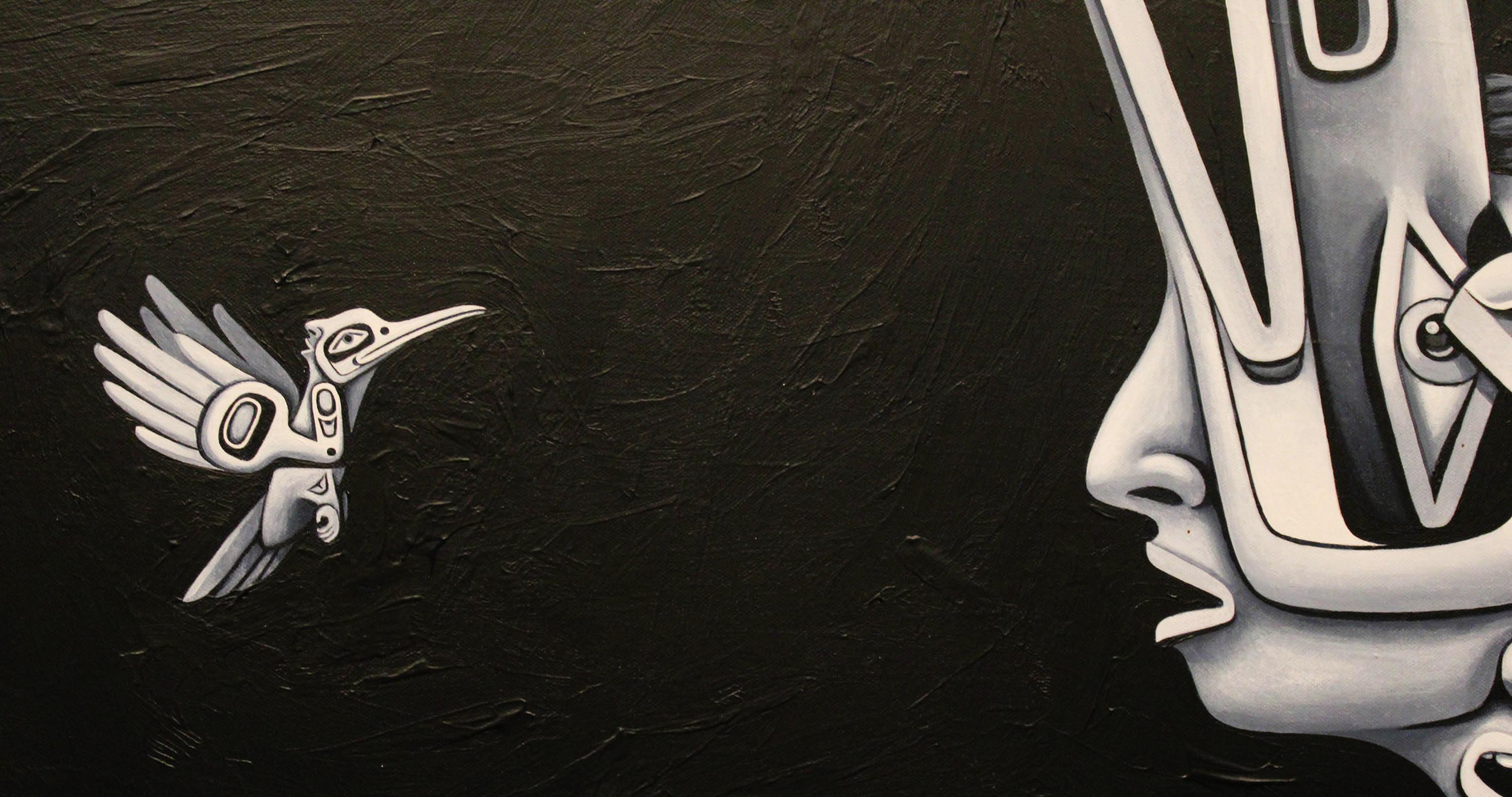

Studies show that exposure to art may be linked to an improvement in mental well-being. A 2019 literature review published in Frontiers in Psychology highlighted studies that linked aesthetic experiences with lower stress markers, including reduced blood pressure. Interacting with art, even when associated with negative emotions,

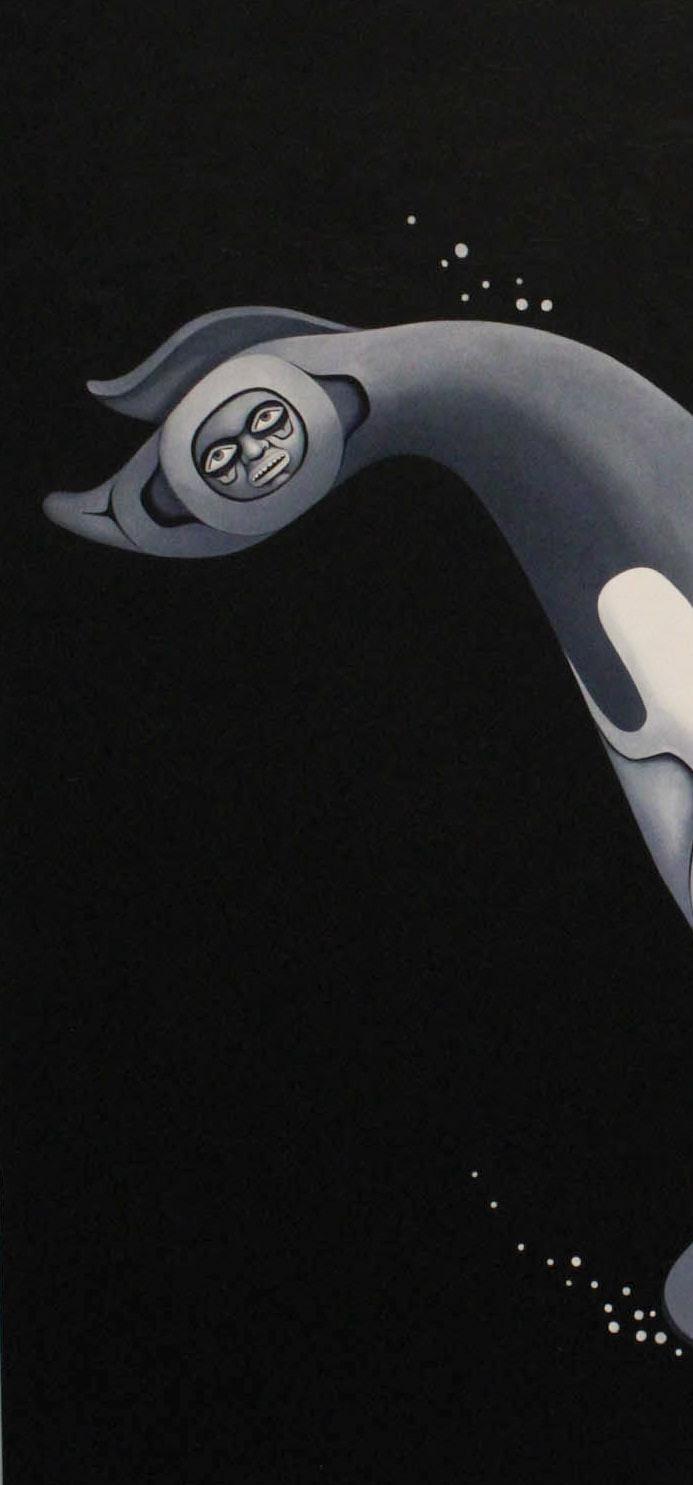

has been shown to reduce stress and improve social inclusion. When studies used museums as a therapy setting, they found it improved social inclusion and lowered stress.
Langara College fine arts coordinator, Rita Yip, said that art exhibitions are an important way to experience different perspectives and expand people’s structural knowledge of art
as a form of expression
“Learning about each other and our world through art is educational.
[Art has you] growing as an individual, knowing what's around you and understanding other people's perspectives,” said Yip.
Médecins francophones du Canada, an association for Frenchspeaking physicians, started a museum prescriptions program in 2018. Doctors prescribe a museum visit to help with the recovery of chronic illnesses and neurological conditions.
The program now has virtual museum prescriptions and has inspired other museum wellness programs, like museum yoga and guided meditation with art.



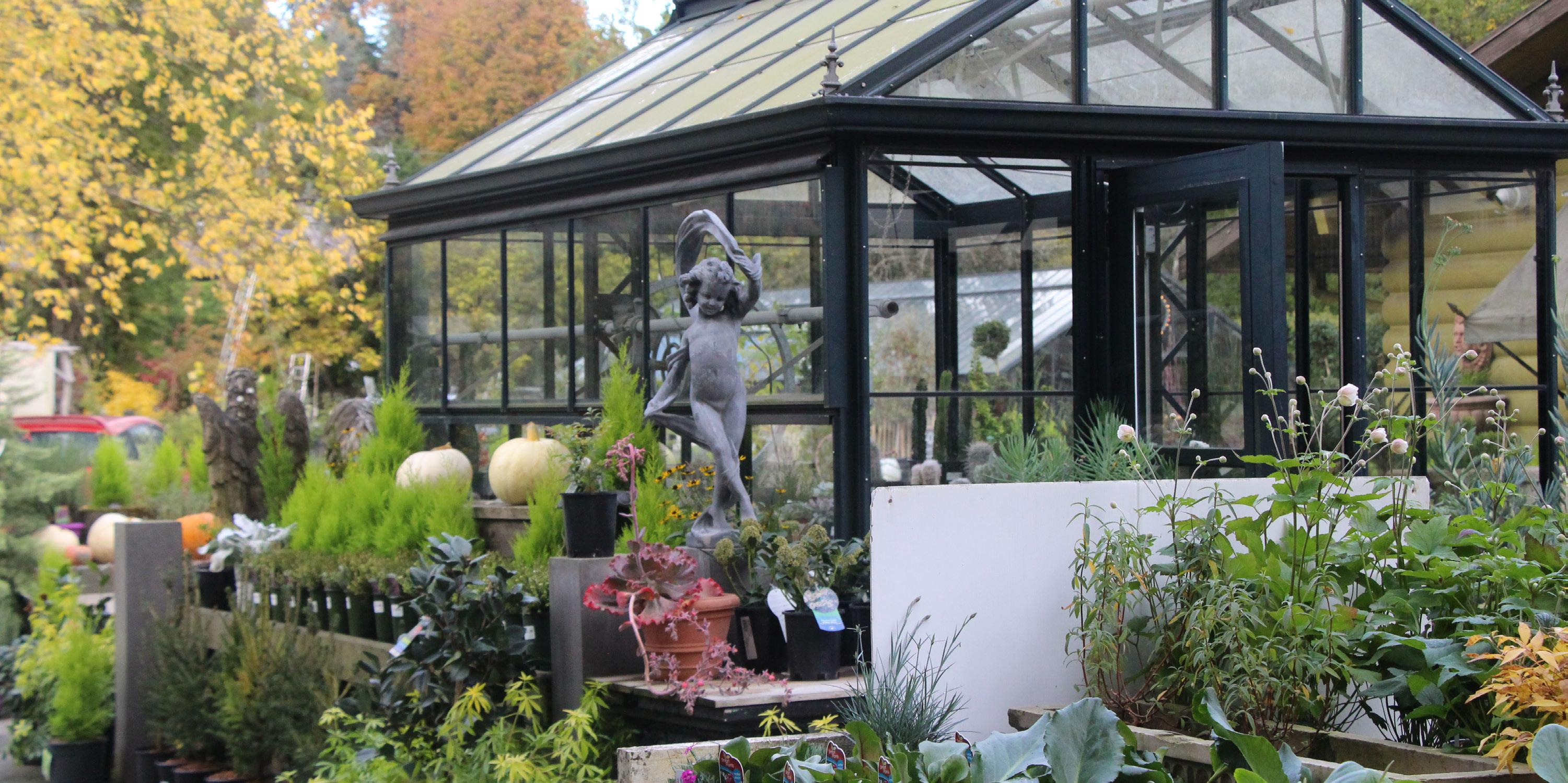
Southlands Nursery in southwest Vancouver is not only a boutique that offers a wide selection of plants, garden needs and decors, it’s also a place where you can find beautiful and unique things.
Purchased and renamed in 1991 by florist Thomas Hobbs, this boutique has existed in some form or another for over 80 years and it has been transformed into an out of the ordinary shopping experience.
Hobbs’ approach to the nursery is inspired by the world of films and he calls it “set dec,” describing it as the equivalent of how sets are decorated in the movie business.
Pots from France, Italy and England as well as antiques that are unique to the nursery are carefully chosen by Hobbs. “I have an eye for beauty and I was just born with that. A good eye and a green thumb,” Hobbs said.
He prides himself on offering some products that you won’t find anywhere else. “My rule, and I say this to the people who work here, is basically, if other stores are selling it, then I don’t want it,” Hobbs said.
Adding to the nursery’s charm, the boutique features a café that offers complimentary hot chocolate and coffee. Hobbs said that he wanted to provide this perk as a way to give back to both the staff and the customers.


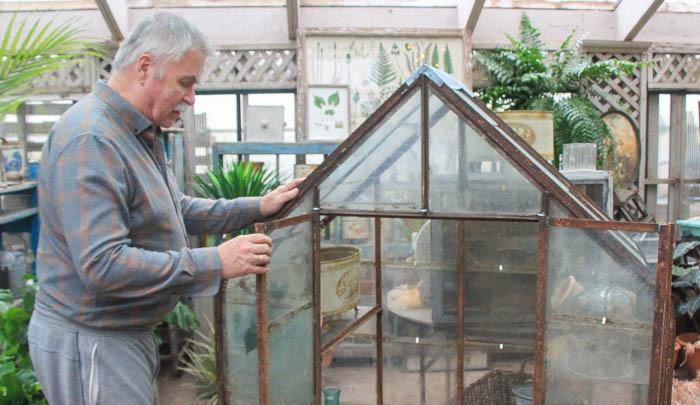
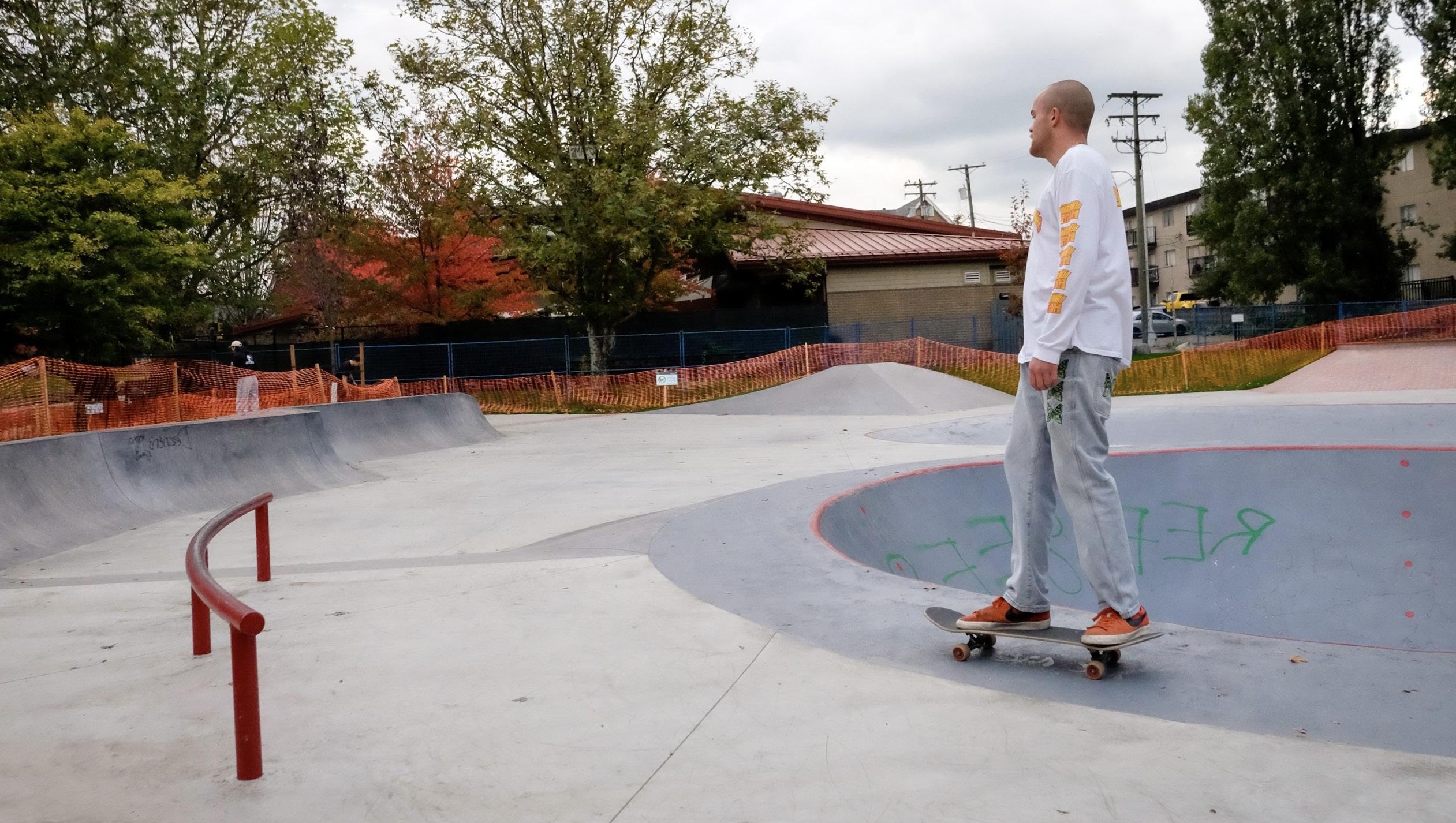
Despite a much needed rebuild, the skateboard community needs an indoor facility
By HILARY ANGUS
Michelle Pezel, who co-owns Antisocial Skateboard Shop in Mount Pleasant and sits on the board of the Vancouver Skateboard Coalition, has been advocating for an indoor skatepark in the city for nearly a decade.
According to data in its own CitySkate strategy, Vancouver lags behind other cities in its skateboarding amenities. The recent redesign of China Creek was the first major investment into skateboarding since 2011. There are plans underway for new outdoor skate facilities, but there are no immediate plans for an indoor space.
Pezel said that the city often gives the same response: it’s too expensive. She said she has also tried to
secure space by sending “hundreds of emails” to private property owners, but has never been able to secure a lease. Pezel said that either the space is too expensive, or the developer backs out when they hear it’s for skateboarding.
“[Skateboarding] still has that bad rap of the ‘90s,” Pezel said. “People don’t want to rent you their spaces.”
“We definitely heard loud and clear from everyone in the skateboard community, and we know that a covered facility is needed.”
an indoor space is a high priority for the city. “We definitely heard loud and clear from everyone in the skateboard community, and we know that a covered facility is needed.”
— MICHELLE LARIGAKIS, PLANNER VANCOUVER PARK BOARD
Michelle Larigakis, a planner with the Vancouver Park Board and the project manager for CitySkate, said
Larigakis said the challenge is balancing the needs of the skateboard community with the needs of other recreational communities who also want indoor spaces. With the high cost of real estate, lack of warehouse space and long-term costs of staffing, Larigakis said a dedicated
indoor skateboarding facility would cost millions of dollars.
She said a key benefit of CitySkate was highlighting the skateboard community’s needs, so now they will be considered whenever opportunities arise, such as a community centre renewal.
Michael Gordon, a retired city planner and longtime skateboarder, said that money and resources are always the issue when it comes to projects like these.
“You've only got so many staff to manage so many projects,” he said.
Gordon said he is pleased the city recognized the benefits of skateboarding.
“It's really important for folks to have an opportunity to have some fun … to be physical.”
For now, the skateboarding community finds opportunities
where it can in the winter months.
The skateboard coalition has run a pop-up covered mini-ramp on Granville Island for the past six years. Granville Island donates the space in-kind, and volunteers manage the ramp.
Pezel said they’re grateful to Granville Island for providing them with a home base for the winter, but that the mini-ramp is unheated and “not the answer.”
She still regularly monitors space listings for both privately-owned and city-owned buildings. She said the skateboard community can manage a safe location itself, if only it would be given the opportunity.
“We know that we have ran [Granville Island] voluntarily with our people and our community, and we could do the same with an indoor space,” Pezel said.
Langara spotlights
Mexican culture by creating altars for the Day of the Dead
By MARIANNE MIRAMBEL
Instructor Ginette Dubé wants Latin American students to feel at home at Langara. That’s why in her first year as a coordinator of the Latin American studies department, she wants the campus to share in important events like the Day of the Dead.
“The goal is to make Latin American culture visible on campus,”
Dubé said. Held on Oct. 31, Langara’s Day of the Dead included a mariachi band, upbeat Mexican songs and the famous Los Del Rio-Macarena dance. It also featured a memory tree in the A Building foyer where participants could write the names of their loved ones on a slip of paper and hang it on the tree as an alternative to offering candles.
The Day of the Dead is a two-day celebration in Mexico when families remember their deceased loved ones by visiting them at a cemetery, preparing food for feasting and offering candles in church.
Just as in the Disney movie Coco, “the remembering of people is very important,” Dubé said.
“What happens is the children who passed away come first,” she
said. “And then the adults come the next day.”
Erick Arriquives, a Langara Latin American club member from Mexico, said that the Day of the Dead includes preparing food and drinks that they think their loved ones would like. “This Day of the Dead is a celebration where we think that all the people that passed away come and visit us,” Arriquives said.
He said he’s thankful to the club because it’s difficult to find his community outside of his home country.
“We share something different from other cultures and it's easier for us to engage,” said Arriquives, a student in the advanced accounting program.
Sofia Lara, a business administration student who came to Canada
three months ago, said she is happy to get to know the Latin community, having the opportunity to cele brate the Day of the Dead with them.
Lara said that Mexi cans light candles and offer flowers to loved ones.
“That's what allows the spirit of our loved ones to come back and be among us for a while,” Lara said.
Breno Tristão, an international student from Brazil with a Mexi can background, said that having this kind of event helps Latinos to get in touch with their culture.

“That’s like a big deal for us
Mexicans. That’s one of the greatest, biggest holidays in our culture,” Tristão said.
Edwin Ruiz, a Mexican student who moved to Canada seven years ago, said that paying a visit to cemeteries on the Day of the Dead is not a sad moment but rather “a moment of celebration.”
Even though he is not in Mexico, he still remembers his loved ones. “I didn’t celebrate it by going to the cemetery, but I did build a mini altar just to commemorate my relatives,” he said.
While the men’s team faced losses in both Friday and Saturday's games, the women’s team celebrated their first win of the season on Saturday after a hardfought match.
After a narrow loss to Camosun on Friday with a score of 73-64, the Falcons women’s team regrouped Saturday to claim a 66-57 victory.
Katelyn Lafleur, a fourth-year player, said the team’s desire for a comeback was strong.
“I feel really good about it. Today was a battle for all of us on the floor,” Lafleur said. After Friday’s loss, “we were all really hungry for that win,” she said.
Lafleur also reflected on the confidence the win gave the team and said it would fuel them in upcoming games. “I think we got to see where our potential could be after today.”
can match the expectations that the coaching staff has for us,” he said. Looking ahead, he hopes to see the players become even more competitive.
MacGillivary aims to improve on last season’s challenges by encouraging less thinking and more free play, inspiring creativity and increasing leadership among the players.
He said “the fire is there” to make the playoffs this season. He noted that the mix of returning and fresh talent has resulted in players working harder and pushing each other. He commented on the team's empathetic nature and said he encourages them to be more “cutthroat” on the court and “go for the kill.”
While the women's team is pushing for greater intensity on the court, the men's team is focused on creating more excitement for fans.
“Go for the kill”
— CAMERON MACGILLIVARY, WOMEN'S TEAM HEAD COACH
Assistant coach Fatima Rahmani Moghadam said she was excited to see the players' energy and competitiveness during Saturday’s game. “We finally got some easy buckets,” Moghadam said.
Women’s head coach Cameron MacGillivary said that the win could be the spark the team needs to reach new heights this season.
“It was good to get the win, get the confidence going, and prove that we
Men’s head coach Cassidy Kannemeyer praised the atmosphere and crowd energy despite the team’s struggles.
“The fans were awesome…it was pretty packed,” he said. However, he said that the team needs to provide fans with more to cheer for.
“We want to play a fast-paced, exciting style of basketball,” he said, admitting that what keeps the fans coming back is winning. They ultimately lost both games, with Friday scoring 89-71 and Saturday 73-62.
Kannemeyer said players need to
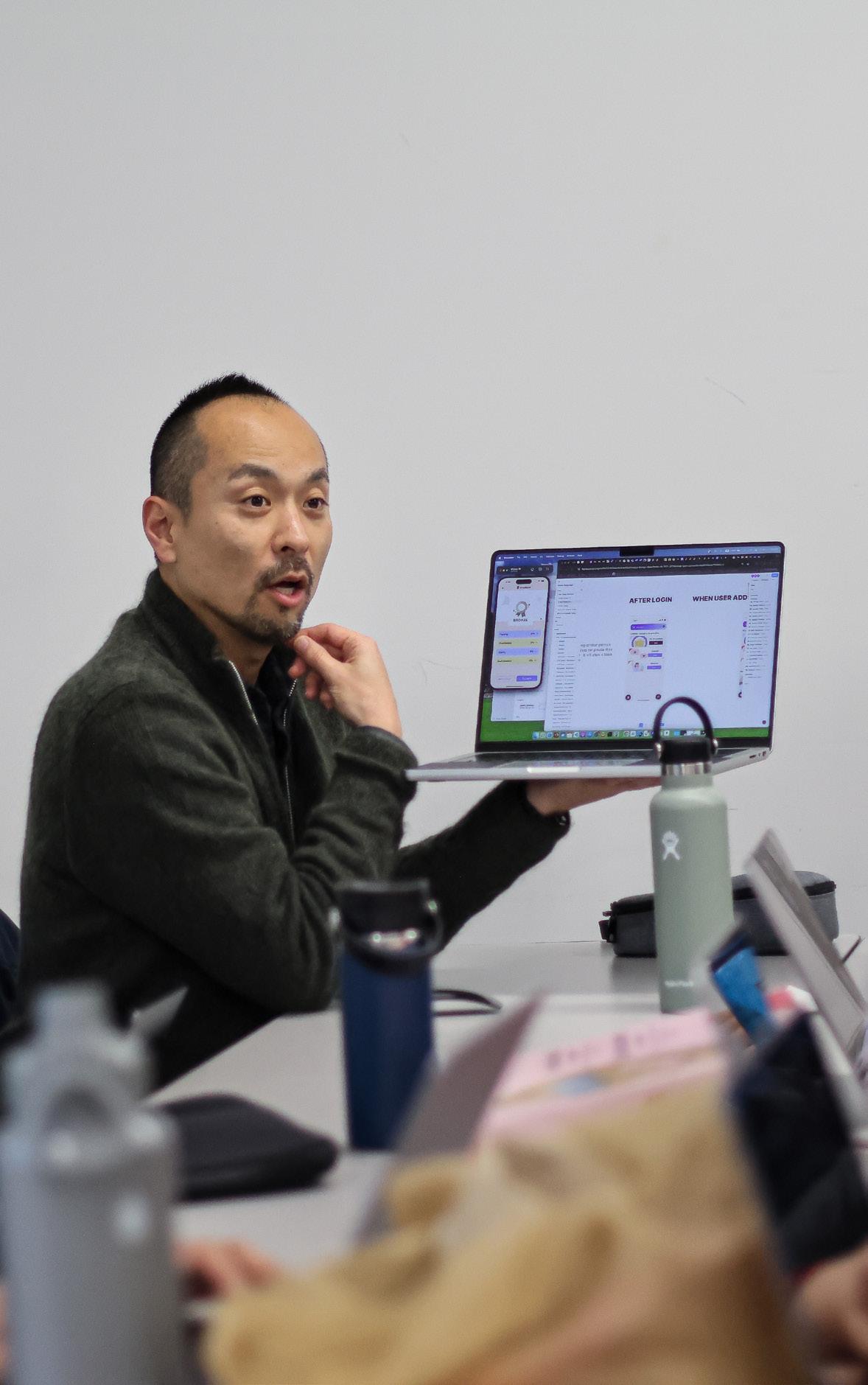
focus more on accepting their roles on the court. “Not everybody can be the scoring hero every night,” he said.
Returning player Owen Jones said Camosun had a strong defence and that they “weren’t able to penetrate.”
The men’s team, who finished last season with a 13-11 win-to-loss ratio, now face pressure after losing top scorers Royce Sargeant and Moeiz Athaya to graduation and players need to step up as a team.


MEN'S
Friday Nov. 8, 2024
Capilano at Langara
8 p.m. PT
Saturday Nov. 9, 2024
Capilano at Langara
7 p.m. PT
WOMEN'S
Friday Nov. 8, 2024
Capilano at Langara
6 p.m. PT
Saturday Nov. 9, 2024
Capilano at Langara
5 p.m. PT
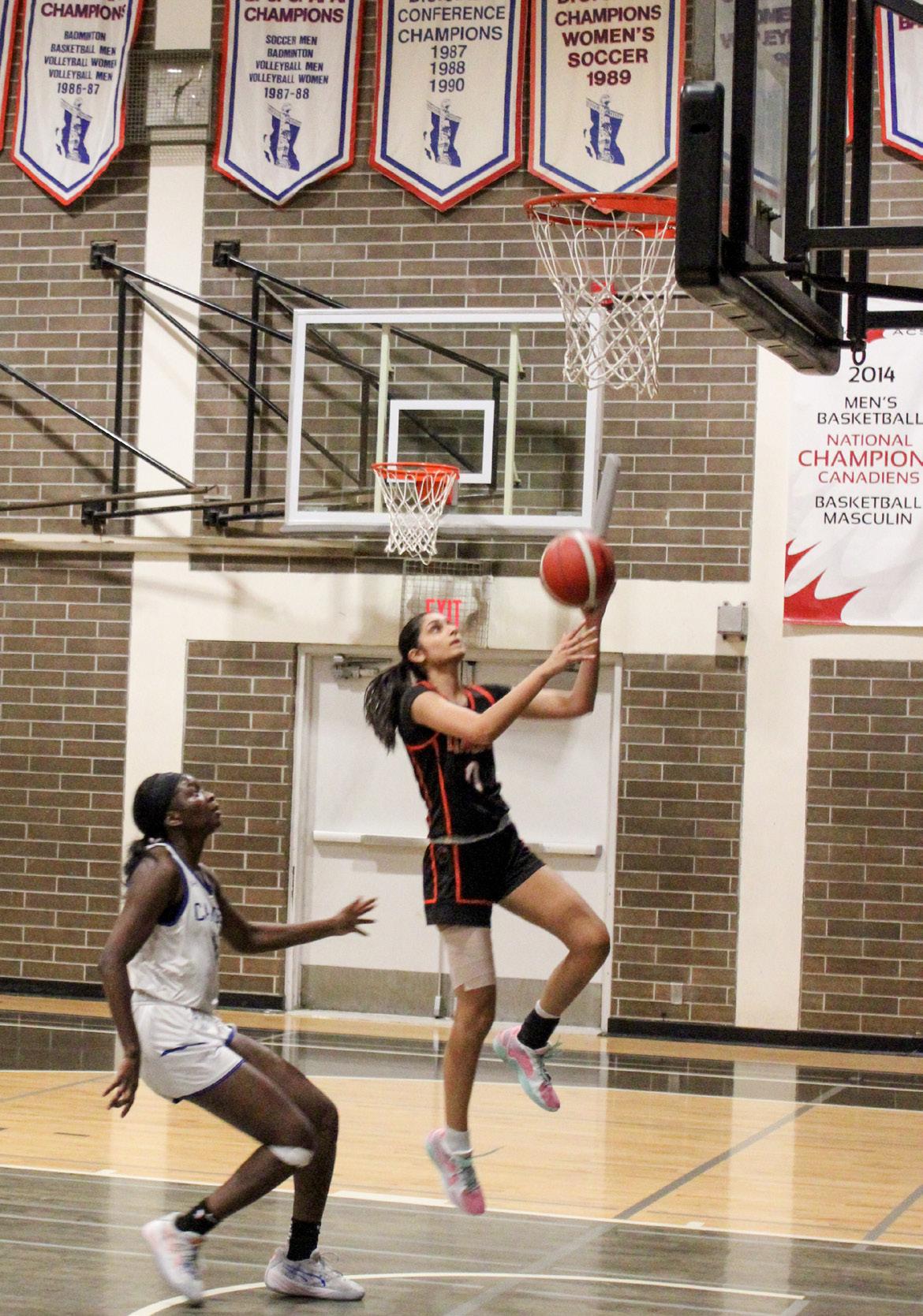
Faced with a looming drop in international student enrolment next term, Langara’s web and mobile design and development program believes the quality of its work will attract new students.
“Not just in education but in business and product development, if you're putting out something of quality, people are seeing that difference,” said Tyler Higgs, an instructor with the program.
“It's easy to get a little bit too fearful,” said Higgs. “But because the quality is there, we will still stay afloat.”
The program is made up predominantly of international students. College statistics show that less than three per cent of enrolment was from domestic students from 20222024. But even with the recent cap on international student acceptances imposed by the federal government,
the instructors remain optimistic about enrolment.
The web and mobile design and development program teaches students how to build mobile apps.
This semester, the students are working on their capstone projects which are the final versions of those apps.
Student Izabela Nadu, who is in her final term, said she had “zero knowledge in tech or design” before she started the program.
Nadu came to Canada after having studied business management in Brazil. Despite having no previous experience, she and her team of classmates built a functioning mobile app.
The app, called SightUP, helps users stay on top of their eye health with vision tests, schedules for optimal times to visit the doctor and daily eye exercises. Nadu said her team had to study not only how to design the app itself but had to learn enough about eye health to make the app useful.
“We did very intensive research to understand what is the correct distance from the phone the user needs to be and how we can identify the correct degree the user has in each eye,” she said.
The market for mobile health apps was valued at US $32 billion in 2023, with projected growth to
US $154 billion by 2034, according to Precedence Research. Many of the capstone projects align with this trend.
Kat Nervez, a student from the Philippines, and her team created an app called Glucofit, which helps diabetics and pre-diabetics track their blood sugar levels. The app connects to a Bluetooth blood monitor, categorizes sugar levels and gives feedback on lifestyle and eating habits.
“This program, it teaches me more about collaborating closely with developers, which is very important when you are looking for a job,” said Nervez.
That collaboration between students focusing on design and students concentrating on development is a cornerstone of the program with instructors pushing for teamwork between the core roles of app creation.
Higgs said that the diversity shown in the program reflects the current industry.
“Coming from the industry myself, you can see that divide [between designers and developers]. Here we can push them to communicate more and themselves being from so many different countries we can see that connection come together more naturally even,” Higgs said.